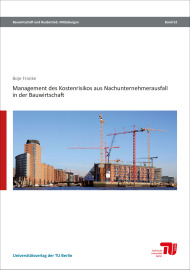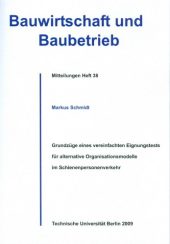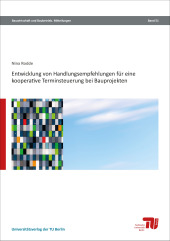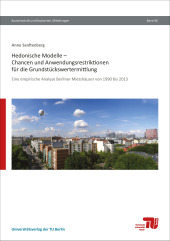Management des Kostenrisikos aus Nachunternehmerausfall in der Bauwirtschaft
Untersuchung des Einsatzes von Sicherungsinstrumenten

Size: 408 pages
Format: 14,8 x 21,0 cm
Publishing year: 2021
Format: 14,8 x 21,0 cm
Publishing year: 2021
Reihe: Bauwirtschaft und Baubetrieb. Mitteilungen ; 52
ISBN 978-3-7983-3220-1
19,50 €
From the perspective of a general contractor (GC), which seeks the overall responsibility for the completion of complex construction projects, the default of one of his subcontractors represents a major cost risk. This paper examines the optimal use of different security instruments to transfer a part of the cost risk from subcontractor default to external risk carriers. The security instruments considered are, on the one hand, bank guarantees or insurance bonds that are provided by the subcontractor to the GC as performance and warranty securities and, on the other hand, subcontractor default insurance (SDI), an insurance product that is still largely unknown in Germany but already established in the United States and that is directly bought by the GC from an insurer.
To be able to quantify total cost of risk of the GC as a function of its use of the security instruments considered, the author describes a portfolio model that measures the cost risk from subcontractor default that is associated with a portfolio of subcontracts. Based on sample calculations, the portfolio model shows that subcontractor default insurance is a highly relevant security instrument for the risk financing of the GC. Subcontractor default insurance allows to selectively transfer the part of the cost risk to an insurer that can neither be covered by guarantees or bonds nor lends itself to be borne by the GC. Compared with the blanket use of performance and warranty guarantees that is still common practice in the German construction industry, a targeted use of security instruments that is deduced from the optimum level of risk transfer enables the GC to substantially increase the efficiency of its risk financing and hence to significantly reduce its expected total cost of risk.



